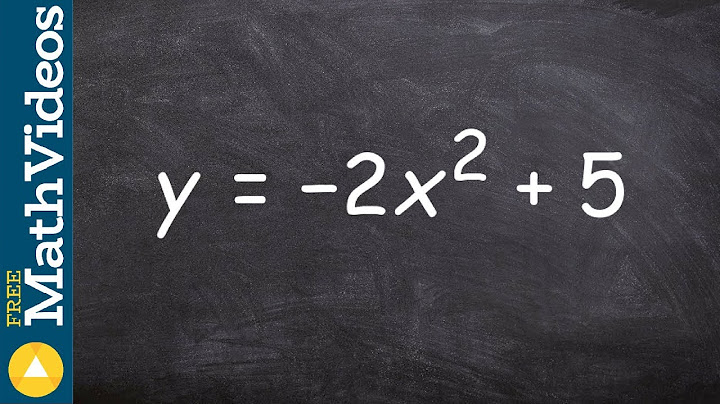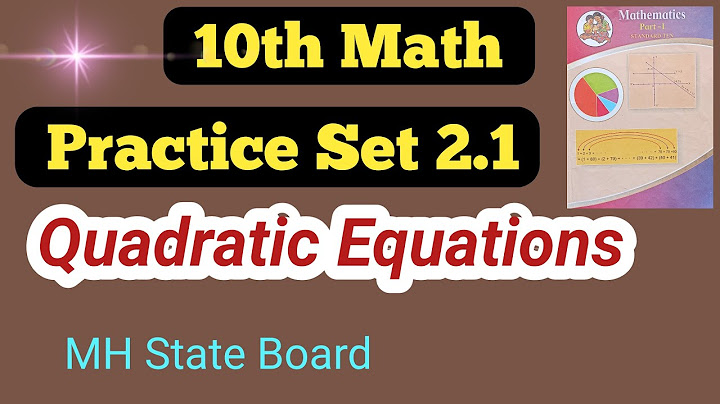Video transcriptLet's say that we want to solve the inequality x squared plus 3x is greater than 10. We want to figure out all of the x's that would satisfy this inequality. I encourage you to pause this video now. And I'll give you a hint. Try to manipulate the way that you would have if this was a quadratic equation. But then as you get to the end, try to reason through it, because the reasoning might departure a little bit from what you are used to. So I'm assuming you've given a go at it. So the first thing that we might want to do, just to get into a form that we're more comfortable with, is subtract 10 from both sides. If we subtract 10 from both sides, then on the left hand side, we're going to have x squared plus 3x minus 10 is still going to be greater than. If we add or subtract the same thing to both sides, it won't change the inequality. But it's now going to be greater than 0. 10 minus 10 is 0. Now, this gets us into a form that we're more used to seeing quadratic expressions in. If this was an equal sign right over here, we'd want to factor this thing. So let's just try to factor here too and see what happens. So we're going to factor it. We're going to think of two numbers whose product is negative 10 and whose sum is positive 3. And we've had a lot of practice doing this. If you think about the factors of 10, it's 1, 2, 5, and 10. 2 and 5 seem tempting, because their difference is 3. So if you have positive 5 and negative 2, that seems to work out. Positive 5 and negative 2. Their product is negative 10, their sum is positive 3. We could rewrite this as x plus 5. Let me do that in that yellow color so you see where this 5 is coming from. X plus 5 times x minus 2 is going to be greater than 0. Now, if this was an equality here, we would say well, how do we get this equals 0? If either of these things were equal to 0, then this entire expression would be equal to 0, because 0 times anything is 0. But we don't have an equality here. We have a greater than symbol. So let's think about how we could reason through this. And I'll do a little bit of an aside here. If I were to tell you that numbers a and b, and if I were take the product a times b, and if someone were to tell you that product is greater than 0, what do we know about a and b? Well, we know that they have to have the same sign. They're either both positive-- a positive times a positive is going to be a positive-- or they're both going to be negative-- a negative times a negative is a positive. It's going to be greater than 0. So we know the same thing here. Let me write it down. So we know either a is greater than 0 and b is greater than zero-- so either both of them are positive or both of them are negative-- or a is less than zero and b is less than zero. So we apply that same logic here. You could view this x plus 5 is a, you could view this x minus 2 as our b of the product of two things. The product is greater than 0. That means that either both of these expressions are positive or they're both negative. So let's write that down. I'll write it this way. So either both of these expressions are positive. So either x plus 5 is greater than 0 and x minus 2 is greater than 0-- let me write it this way-- or they're both negative. x plus 5 is less than 0 and x minus 2 is less than 0. So now let's think about all of these inequalities independently. But let's maintain this logic here of the and and the or. So let's look at this. Either they're both positive, so if both of these expressions are positive, what do we know about x? Well, if you subtract 5 from both sides of this inequality, you get x is greater than negative 5. And if you add 2 to this inequality, both sides of that inequality, you're going to get x is greater than 2. So if x is greater than negative 5 and x is greater than 2, what do we know about x? Well, any x that's greater than two is going to be greater than negative 5. So we could just simplify this right over here to say that x is greater than 2. So all of this, this is equivalent to saying x is greater than 2, because clearly anything that is greater than 2 will satisfy that. And both of these things have to be true. For example, x equal negative 4, it would satisfy this inequality but not this one. And so the and would break down. And negative 4 does not satisfy both of these. In order to satisfy both of these, you essentially have to satisfy that one. So this expression simplified to that. Now what about this? What about this statement right over here? Well, x plus 5 less than 0, subtract 5 from both sides. That is, x is less than negative 5. And add 2 to both sides of that inequality, you get x is less than 2. Now if x is less than negative 5 and x is less than two, what do we know about x? Well, that just means that x has to be less than negative 5. If it's less than negative 5, it's definitely going to be less than 2. And we got to remind ourselves that we have this or here. And that's essentially describing the solution set for this quadratic inequality here. x is going to be greater than 2 or x is going to be less than negative 5. And we could actually plot this solution set on a number line. So if this is our number line right over here, and let's say that this is 0. Let's say that's 1. 2 right over here. This is negative 1, negative 2, negative 3, negative 4, negative 5. So x could be greater than 2, not greater than or equal to, so I'm going to put an open circle here. So it could be greater than 2. Or it could be less than negative 5, not less than or equal to, so I'm going to put an open circle here. And so it could be less than that. So x could be any number. It could be negative 6, negative 6 would satisfy this. You could verify that. Negative 6 squared is 36 plus negative 18, which is going to be 18, which is greater than 10. Or you could have, say, a positive 3 would work. 3 squared is 9 plus another 9 is going to be 18, which once again, it is greater than 10. What are the steps on graphing quadratic inequalities?Step 1: Place the inequality in standard form with zero on one side. Step 2: Graph the quadratic equation. Step 3: Shade the x-values that produce the desired results. Step 4: Convert the shading to interval notation.
|

Related Posts
Advertising
LATEST NEWS
Advertising
Populer
Advertising
About

Copyright © 2024 en.apacode Inc.


















